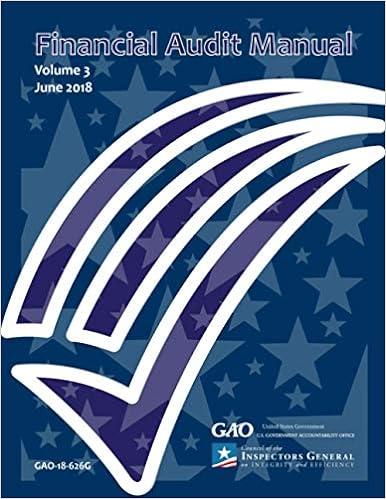Question
Introduction Focus: DICE-2013R model (Dynamic Integrated model of Climate and the Economy). The DICE model views the economics of climate change from the perspective of
Introduction
Focus: DICE-2013R model (Dynamic Integrated model of Climate and the Economy).
The DICE model views the economics of climate change from the perspective of neoclassical economic growth theory (see particularly Solow 1970). In this approach, economies make investments in capital, education, and technologies, thereby reducing consumption today, in order to increase consumption in the future.
The DICE model extends this approach by including the natural capital of the climate system. In other words, it views concentrations of GHGs as negative natural capital, and emissions reductions as investments that raise the quantity of natural capital (or reduce the negative capital). By devoting output to emissions reductions, economies reduce consumption today but prevent economically harmful climate change and thereby increase consumption possibilities in the future.
Exercise
DICE: Consider a standard (discrete time) neoclassical growth model with a social planner maximizing (1) subject to preferences (2) in the DICE 2013 writeup. To simplify things, assume population and technology do not grow.
a) Suppose that production was Cobb-Douglas as in (4), but without abatement or damages. The social planner takes the capital stock evolution equation to be Kt+1 = (1 )Kt + Qt Ct.
- Derive the planners Euler equation for this economy (i.e. find the optimality condition which relates marginal utility in period t to marginal utility in period t + 1).
b) Next consider a simplified version of the DICE model, with the production function:
Where t grows over time, but part of Qt can be spent on damage control: t+1 = (1+)t (Qt Ct) Derive the optimality conditions for the choices of .
c) Is there any fundamental difference between capital and damages? What is this model missing?

Introduction Focus: DICE-2013R model (Dynamic Integrated model of climate and the Economy). The DICE model views the economics of climate change from the perspective of neoclassical economic growth theory (see particularly Solow 1970). In this approach, economies make investments in capital, education, and technologies, thereby reducing consumption today, in order to increase consumption in the future. The DICE model extends this approach by including the natural capital of the climate system. In other words, it views concentrations of GHGs as negative natural capital, and emissions reductions as investments that raise the quantity of natural capital (or reduce the negative capital). By devoting output to emissions reductions, economies reduce consumption today but prevent economically harmful climate change and thereby increase consumption possibilities in the future. Exercise DICE: Consider a standard (discrete time) neoclassical growth model with a social planner maximizing (1) subject to preferences (2) in the DICE 2013 writeup. To simplify things, assume population and technology do not grow. Suppose that production was Cobb-Douglas as in (4), but without abatement or damages. The social planner takes the capital stock evolution equation to be Kt+1 = (1-5)K++ Qt - Ct. Derive the planner's Euler equation for this economy (i.e. find the optimality condition which relates marginal utility in period t to marginal utility in period t + 1). Next consider a simplified version of the DICE model, with the production function: AL Qt = S24 Where It grows over time, but part of Qt can be spent on damage control: 12t+1 = (1+n)2-(Qt-Ct) Derive the optimality conditions for the choices of 1. Is there any fundamental difference between capital and damages? What is this model missing? Introduction Focus: DICE-2013R model (Dynamic Integrated model of climate and the Economy). The DICE model views the economics of climate change from the perspective of neoclassical economic growth theory (see particularly Solow 1970). In this approach, economies make investments in capital, education, and technologies, thereby reducing consumption today, in order to increase consumption in the future. The DICE model extends this approach by including the natural capital of the climate system. In other words, it views concentrations of GHGs as negative natural capital, and emissions reductions as investments that raise the quantity of natural capital (or reduce the negative capital). By devoting output to emissions reductions, economies reduce consumption today but prevent economically harmful climate change and thereby increase consumption possibilities in the future. Exercise DICE: Consider a standard (discrete time) neoclassical growth model with a social planner maximizing (1) subject to preferences (2) in the DICE 2013 writeup. To simplify things, assume population and technology do not grow. Suppose that production was Cobb-Douglas as in (4), but without abatement or damages. The social planner takes the capital stock evolution equation to be Kt+1 = (1-5)K++ Qt - Ct. Derive the planner's Euler equation for this economy (i.e. find the optimality condition which relates marginal utility in period t to marginal utility in period t + 1). Next consider a simplified version of the DICE model, with the production function: AL Qt = S24 Where It grows over time, but part of Qt can be spent on damage control: 12t+1 = (1+n)2-(Qt-Ct) Derive the optimality conditions for the choices of 1. Is there any fundamental difference between capital and damages? What is this model missing
Step by Step Solution
There are 3 Steps involved in it
Step: 1

Get Instant Access to Expert-Tailored Solutions
See step-by-step solutions with expert insights and AI powered tools for academic success
Step: 2

Step: 3

Ace Your Homework with AI
Get the answers you need in no time with our AI-driven, step-by-step assistance
Get Started


